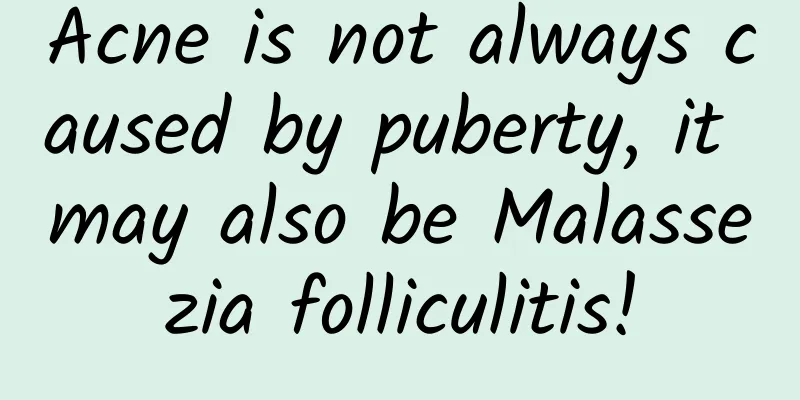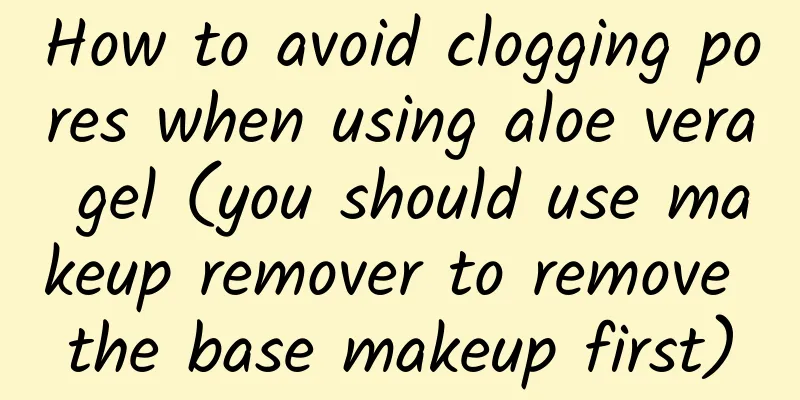Acne is not always caused by puberty, it may also be Malassezia folliculitis!

|
Author: Wang Aiping, Chief Physician, Peking University First Hospital Deputy Director of the Dermatomycology Group of the Chinese Society of Dermatology and Venereology Reviewer: Chen Yong, Chief Physician, Beijing Chaoyang Hospital, Capital Medical University Some people have many pimples on their chest and back, accompanied by itching, and people often think it is acne, also known as pimples. If you are in adolescence and have pimples on your face, it is most likely acne. However, some cases may not be acne but may be Malassezia folliculitis. 1. What is Malassezia folliculitis? Malassezia is a normal flora of the human body. It is a fungus that often resides in areas of sebum secretion, such as the head, face, neck, trunk, armpits and groin. Malassezia folliculitis is a condition in which Malassezia invades the hair follicles or the area surrounding the hair follicles, causing folliculitis. In clinical practice, we can see inflammatory papules, which are what ordinary people call small bumps with white heads on them. They look similar to acne and sometimes cause itching. They most commonly occur on the chest and back. In severe cases, they can spread to the proximal upper limbs and the lower back. Figure 1 Original copyright image, no permission to reprint Malassezia folliculitis is related to heat. Hot and humid weather, wearing non-breathable clothes, poor hygiene conditions, etc. can induce Malassezia folliculitis. Some young and middle-aged people are prone to it. From a clinical perspective, Malassezia folliculitis occurs more often in people suffering from certain diseases, such as those who need to take glucocorticoids, immunosuppressants, and targeted drugs for a long time. The body's immunity is reduced, making it easy to get Malassezia folliculitis, which is sometimes accompanied by seborrheic dermatitis, combined with erythema and greasy scales. Malassezia folliculitis is common in AIDS patients. After the immune system of AIDS patients is destroyed, Malassezia will multiply abnormally and invade the hair follicles, which are often widespread and very severe, with pus-filled papules. In short, people who use immunosuppressants and have low immune function are prone to Malassezia folliculitis. 2. How to diagnose Malassezia folliculitis? Malassezia folliculitis needs to be differentiated from bacterial folliculitis. Sometimes the two types of folliculitis look very similar and can be differentiated through mycological examination. After squeezing out the pus plug from the hair follicle and observing it under a microscope, if you see a lot of Malassezia spores, you can diagnose it as Malassezia folliculitis. If you can't see the fungus but see a lot of bacteria, it's bacterial folliculitis. If the conditions for a mycological examination are not met and it seems like Malassezia folliculitis, a tissue pathology examination can be done. Special staining can also show the spores of Malassezia, and the disease can be diagnosed. 3. How to treat Malassezia folliculitis? Malassezia folliculitis is an inflammation of the hair follicles. The hair follicles have reached the dermis, which is relatively deep. Topical medications cannot penetrate the dermis. Therefore, Malassezia folliculitis requires treatment with oral antifungal drugs, with topical antifungal drugs as an auxiliary. Some clinical studies have shown that for 4 weeks of treatment with topical antifungal drugs alone, the cure rate is only 10%; while for 4 weeks of combined treatment with topical and oral antifungal drugs, the cure rate can basically reach 100%. Therefore, patients with severe Malassezia folliculitis need to see a dermatologist. After a clear diagnosis, they can be treated with oral itraconazole and combined with topical antifungal drugs. Ketoconazole cream or ketoconazole lotion is the first choice. Please follow the doctor's advice for the specific course of medication. Figure 2 Original copyright image, no permission to reprint Malassezia invades the hair follicles, and the inflammation is located relatively deep. Sometimes brown spots are left after recovery, which is actually pigmentation. Observe for 6 to 9 months to see if the disease can recover. Some patients can recover, while others are particularly difficult to recover. Will Malassezia folliculitis recur after being cured? There is a possibility of recurrence. Because Malassezia is a normal flora of the human body, it usually stays on the surface of our body. As long as the conditions are right, it will multiply and invade the hair follicles, causing recurrence. To prevent recurrence, we need to remove susceptibility factors and use appropriate preventive medication when necessary. In areas prone to Malassezia folliculitis, we can apply some antifungal drugs from time to time, such as ketoconazole lotion or cream, which can reduce the Malassezia to below the threshold of disease and prevent it from recurring. |
<<: Medication, puncture, surgery? How should liver abscess be treated?
>>: Intestinal obstruction means the intestines are blocked? Does it require surgery?
Recommend
What is the age range of menopause for women?
When you reach a certain age, you will enter meno...
What should I drink after eating hot pot? Can I drink yogurt while eating hot pot?
I love hot pot but I am afraid of getting fat. It...
Do we really need three meals a day?
The idea of "three meals a day" is ve...
Mycoplasma vaginalis
The human body can be infected in many parts, and...
What should I do if I have heavy menstrual flow and stomach pain?
There is a lot of menstrual blood and abdominal p...
How to supplement calcium for middle-aged and elderly women
How can middle-aged and elderly women supplement ...
How to wear silicone invisible underwear
Silicone underwear is also very popular today, an...
White spots on nipples
White spots on the nipples basically occur in bre...
Symptoms of female vulvar furuncle
What are the common symptoms of female vulvar fur...
Smallpox eradication day: How difficult it is to defeat disease? Just look at the 200-year history of human struggle with smallpox.
On October 25, 1979, the World Health Organizatio...
Is it okay to take emergency contraceptive pills twice a month?
Emergency contraceptive pills are a contraceptive...
What causes yellow leucorrhea and itchy vulva?
Why does leucorrhea turn yellow? Why does the vul...
Is pregnancy eczema fetal toxin?
The statement that pregnancy eczema is fetal toxi...
What should you pay attention to when you have your first menstrual period?
Women begin menstruating after they reach puberty...
What is the nutritional value of bayberry? What are the benefits of eating bayberry?
Bayberry has a moderate sweet and sour taste. It c...









